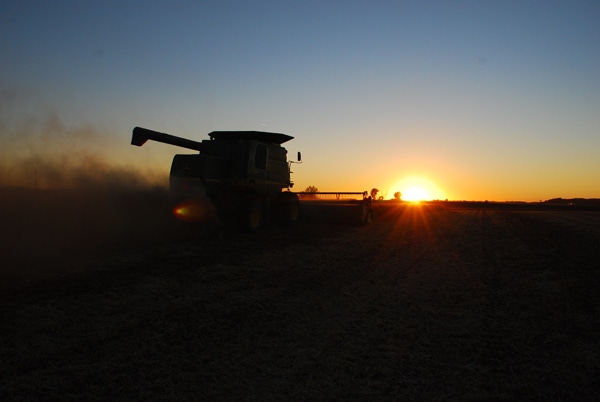March 6, 2017

Most crop producers in the upper midwest are enrolled in the county yield-based ag risk coverage (ARC-CO) farm program choice on their corn and soybean base acres for the 2014 to 2018 crop years. Many producers in the region earned a significant 2014 corn ARC-CO payment, while farm operators in some counties also earned a substantial 2015 ARC-CO payment on their corn base acres. As farm operators finalize their cash flow estimates for 2017, they are wondering what level, if any, that the 2016 ARC-CO payment will be in October 2017. ARC-CO payments for soybeans were much lower and less likely for the 2015 crop year, due to above average soybean yields in most areas, which is a trend that will continue for 2016 payments.
The benchmark (BM) prices for corn and soybeans for the 2016 crop year are $4.79 per bushel for corn and $11.87 per bushel for soybeans, which is down from $5.29 per bushel for corn and $12.27 per bushel for soybeans in both 2014 and 2015. The BM prices are adjusted each year, using the USDA market-year average (MYA) price for the preceding five years, then dropping the high and low MYA price, and averaging the other three MYA prices. The benchmark (BM) County yield for 2016 is calculated by taking the average county yields for the previous five years (2011-2015), dropping the high and low yield, and the averaging the other three yields. The 2016 County benchmark (BM) revenue for a given crop is the County BM yield times the 2016 BM price, which is then multiplied by 86 percent (.86) to calculate the “County Revenue Guarantee”.
The county BM corn yields in most Minnesota counties in 2016 will be similar to 2015 BM yields, after declining from 2014 County BM yield levels, due to the very low average County yields in in 2014. 2010 was dropped for the 2016 BM yield calculation, which was a very strong yield year in most counties, and was replaced by a very high corn yield year in 2015. The result was no change in County BM corn yields from 2015 to 2016 in a large majority of counties in Minnesota. The reduced county BM corn yields in 2015 and 2016 lowers the potential maximum ARC-CO payment per crop base acre, as well as lowering the potential for ARC-CO payments at similar actual corn yield levels in a given year. County soybean BM yields did not vary greatly from 2015 to 2016, except in a few counties. Due to two years in a row of very strong corn and soybean yields in 2015 and 2016 in most upper midwest counties, the BM yields should increase for the 2017 crop year.
2016 ARC-CO payments for a given crop are paid when the actual 2016 county revenue for the crop falls below the 2016 County benchmark (BM) revenue guarantee. The actual County revenue is the final 2016 County FSA yield times the final MYA price for 2016. The 2016 MYA price is the national average corn or soybean price from Sept. 1, 2016 to Aug. 31, 2017, which will be finalized on Sept. 30, 2017. The MYA price is the 12-month national average price for a commodity, based on the average market price received by farm operators across the United States, which is then “weighted” at the end of the year, based on the volume of bushels sold in each month. As of Feb.1, 2017, USDA is estimating the estimated 2016 MYA prices are $3.40 per bushel for corn, and $9.50 per bushel for soybeans.
The USDA National Agricultural Statistics Service (NASS) recently released the 2016 estimated average county yields for corn, soybeans, and other crops. The 2016 NASS county yields offer a good estimate of where final 2016 ARC-CO farm program payments are likely to end up, depending on the final 2016 MYA price level. The NASS yields may be adjusted slightly by USDA to arrive at the final 2016 County FSA yields, which are used to calculate the 2016 ARC-CO payments. However, any adjustments in the final 2016 county yields will likely be lower than the 2016 NASS yield estimates, which will increase the likelihood or payment level for 2016 ARC-CO payments, especially for corn. The 2016 NASS County yields are available on the NASS web site at: http://www.nass.usda.gov/
The relationship between the final 2016 county yield and the 2016 County benchmark (BM) yields is extremely important in calculating potential 2016 ARC-CO payments for corn and soybeans. Expressing the 2016 County yield as a “% of BM Yield” is actually more important than the final County yield in determining estimated ARC-CO payments. Any County that has a corn “% of BM yield” of less than 107% will likely realize the maximum estimated 2016 corn ARC-CO payment for that county. Counties with a “% of BM yield” of 121% or higher will likely not receive a 2016 corn ARC-CO payment. For soybeans, counties with a “% of BM yield” of 108% or higher will likely not receive a 2016 ARC-CO payment.
There will likely be a large difference in the 2016 corn ARC-CO payments from county-to-county, depending on the final 2016 County yield, expressed as a “% of BM Yield”. It appears that most counties in South Central and Southeastern Minnesota, as well as some counties in Central Minnesota, will get a partial 2016 corn ARC-CO payment; however very few will get the maximum payment. Many counties in this region had 2016 corn yields that were similar or lower than 2015 corn yields. Except for a few isolated counties, most counties in Southwest and West Central Minnesota will not receive a 2016 corn ARC-CO payment, due to the very high 2016 corn yields compared to the BM yields in most counties. No counties in the Upper Midwest are expected to receive a 2016 soybean ARC-CO payment, as a result of very strong 2016 soybean yields, and the increase in the estimated soybean 2016 MYA price, compared to 2015.
Overall, 2016 ARC-CO payments for corn and soybeans are likely to much less prevalent in most portions of the Upper Midwest, as compared to 2014 and 2015 ARC-CO payment levels. In both 2014 and 2015, the $5.29 BM price for corn, compared to the final MYA prices in both years, resulted in some significant corn ARC-CO payments in many counties. Soybean ARC-CO payments were much more variable in 2014 and 2015. The 2016 corn and soybean yields were well above average in most areas of the Upper Midwest, which together with a lower national BM price for corn and soybeans, has reduced the likelihood of significant 2016 corn ARC-CO payments in many counties, and will result in no 2016 soybean ARC-CO payments in most counties.
The current 2016 corn and soybean ARC-CO payment estimates are based on the 2016 NASS County yields and the current MYA prices; however, the final payments could vary based on changes in the MYA price levels between now and Aug. 31, 2017. If MYA prices decline, the likelihood or the level of ARC-CO payments increases, and vice-versa if the MYA price increases. Given the current corn and soybean market situation, we are not likely to see major movement in the MYA prices from current levels by the end of the marketing year. USDA could also make adjustments in the announced NASS yields to arrive at the final 2016 FSA County yields, which are used to calculate 2016 ARC-CO payments. There will likely be a 6.8 percent Federal sequestration reduction on all 2016 ARC-CO payments that paid in October, 2017, similar to the 2014 and 2015 ARC-CO payments.
Previous county yields for corn, soybeans, and other crops, benchmark yields and revenues, FSA yields, 2014 and 2015 ARC-CO payment levels, and other farm program information are available on the FSA ARC-PLC web site, which is at: www.fsa.usda.gov/arc-plc. Kent Thiesse has prepared an Information Sheet titled: “Estimating 2016 Corn and Soybean ARC-CO Payments”, which contains several tables relating to 2016 ARC-CO payments. He has also prepared 2016 ARC-CO Payment Estimate Tables for most counties in Minnesota and Northern Iowa, as well as Eastern North and South Dakota. To receive a free copy of the Information Sheet and the Payment Tables, send an e-mail to: [email protected]
About the Author(s)
You May Also Like






